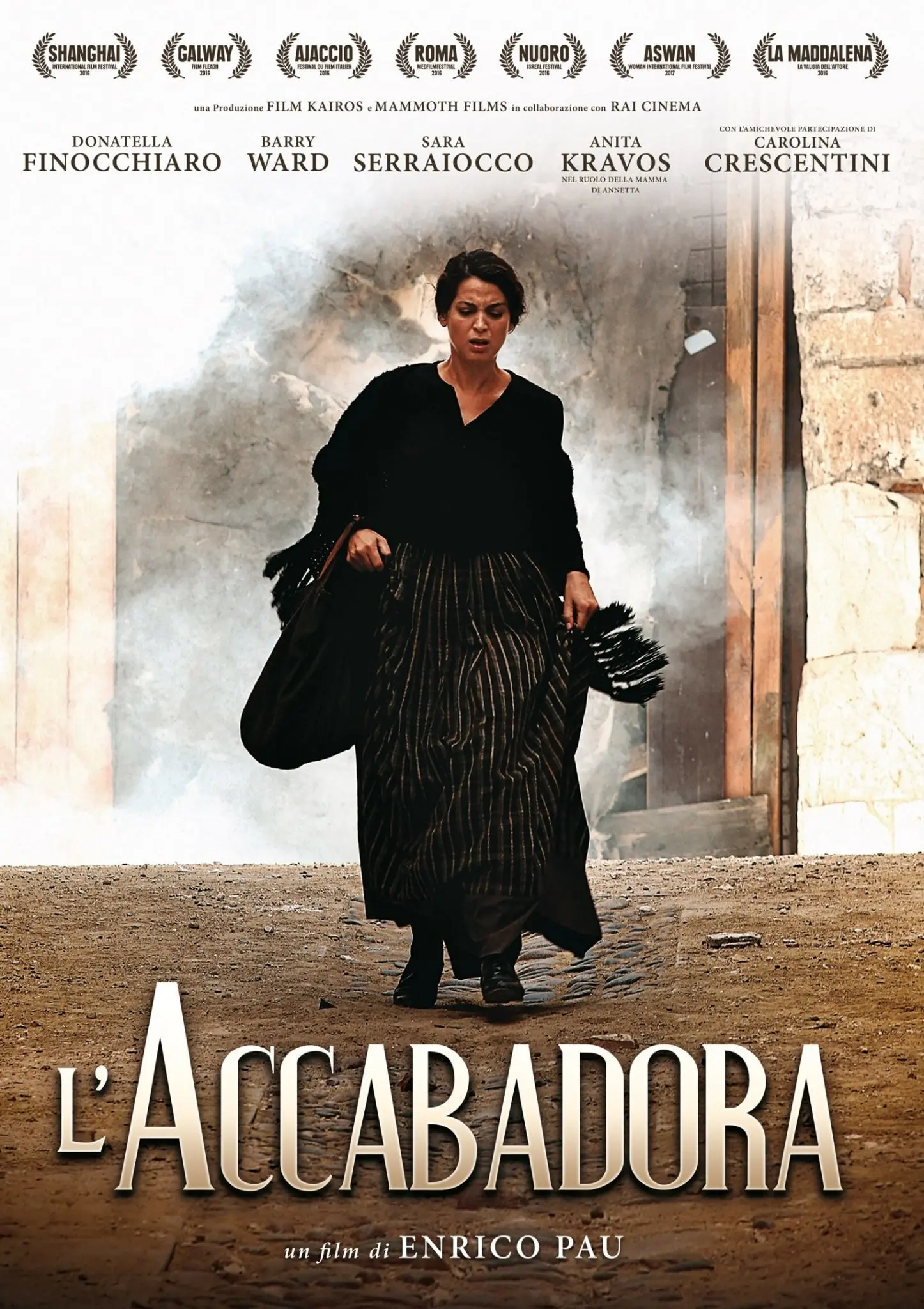

The film portrays a rural and ancestral Sardinia baking in the sun. It was shot in Collinas (VS), 60km north of Cagliari, with its low stone houses, passageways, deserted roads and surrounding countryside (some of the exterior shots were taken on the Giara di Gesturi, a basaltic plateau in Medio Campidano). The scenes take place in a grand building with a perfectly kept courtyard.
Annetta, the protagonist, has followed in her mother’s footsteps and is an accabadora, who ends the suffering of the terminally ill by killing them. The accabadora is an almost magical figure, to the extent that some anthropologists doubt they ever existed, while there are those who confirm that they still operated in certain isolated areas of Sardinia up until the 1050s.
In Cagliari, where Annetta goes in search of her niece Tecla, there’s a change of scene: it’s 1943 and the city has been seriously damaged by bombs, but despite the fact that many people were evacuated, some stayed to keep the city alive throughout the bombing. Among them was a doctor, who hung onto the anatomical waxes that artist Clemente Susini made between 1803 and 1805 in the wax modelling workshop of La Specola Museum using dissections of corpses by Sardinian Francesco Antonio Boi, professor of human anatomy at the University of Cagliari. These masterpieces, which are some of the best wax models in the world, are today housed in the Sala Pentagonale in the Cittadella dei Musei in Piazza Arsenale. This doctor inspired the character of Albert.
Cagliari is unrecognisable and spooky: it was on 1 May 1943 that Marino Cao’s camera captured footage of the famous Sant-Egidio procession weaving its way between the ruins of a city destroyed by bombing. In the film, the footage is captured by Albert, the British doctor, at the end of the film.
The film portrays a rural and ancestral Sardinia baking in the sun. It was shot in Collinas (VS), 60km north of Cagliari, with its low stone houses, passageways, deserted roads and surrounding countryside (some of the exterior shots were taken on the Giara di Gesturi, a basaltic plateau in Medio Campidano). The scenes take place in a grand building with a perfectly kept courtyard.
Annetta, the protagonist, has followed in her mother’s footsteps and is an accabadora, who ends the suffering of the terminally ill by killing them. The accabadora is an almost magical figure, to the extent that some anthropologists doubt they ever existed, while there are those who confirm that they still operated in certain isolated areas of Sardinia up until the 1050s.
In Cagliari, where Annetta goes in search of her niece Tecla, there’s a change of scene: it’s 1943 and the city has been seriously damaged by bombs, but despite the fact that many people were evacuated, some stayed to keep the city alive throughout the bombing. Among them was a doctor, who hung onto the anatomical waxes that artist Clemente Susini made between 1803 and 1805 in the wax modelling workshop of La Specola Museum using dissections of corpses by Sardinian Francesco Antonio Boi, professor of human anatomy at the University of Cagliari. These masterpieces, which are some of the best wax models in the world, are today housed in the Sala Pentagonale in the Cittadella dei Musei in Piazza Arsenale. This doctor inspired the character of Albert.
Cagliari is unrecognisable and spooky: it was on 1 May 1943 that Marino Cao’s camera captured footage of the famous Sant-Egidio procession weaving its way between the ruins of a city destroyed by bombing. In the film, the footage is captured by Albert, the British doctor, at the end of the film.

Annetta is a woman who always wears black, is always on her own, and never speaks. And she has a terrible secret. She spends her time waiting for a phone call and when it comes, she opens up an old leather bag containing a wooden bat, an old pillow, and a broken mirror. When she gets to Cagliari she tries to find herself, leaving her painful past behind her.